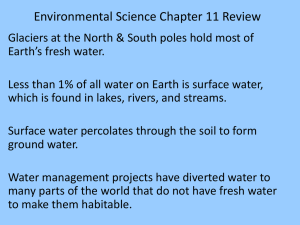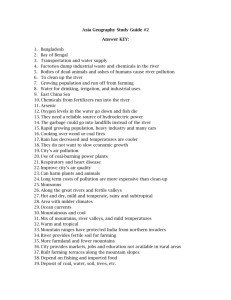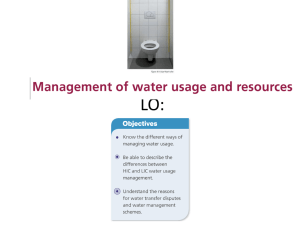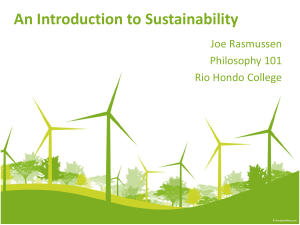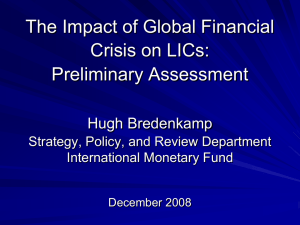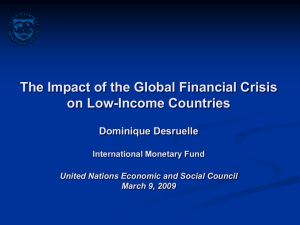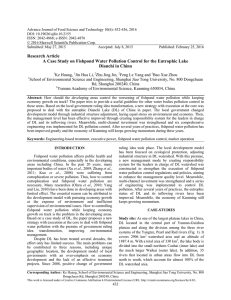Watery Worlds.pdf
advertisement
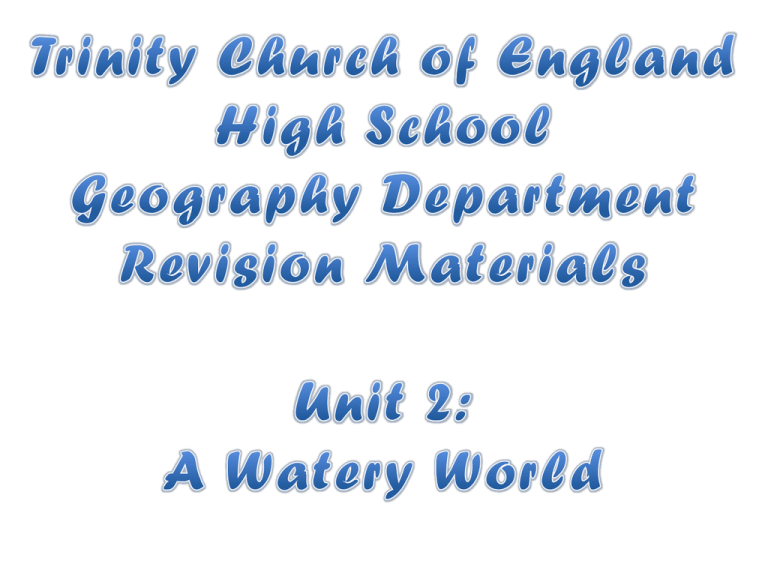
Three main uses of water: 1. Agriculture – especially in irrigation 2. Industry – for cooling machinery, food and drink manufacture, energy 3. Domestic – drinking, washing, cleaning Average water consumption: Divide the total amount of water used by the number of people living here. But this doesn’t give us an accurate picture! High consumption in HIC – 1,200m³ per year Low consumption in LIC – 400 m³ per year Wealth, Development and Water Consumption As a general rule, the richer a country the more water is available and therefore consumed. Due to the following reasons: • • • • • • • Greater use of machinery in industry Higher consumption of food and drink More labour saving devices eg washing machines and dish washers More cars to be washed More gardens to be watered More leisure time so more hot tubs, swimming pools, watered golf courses Higher personal hygiene therefore creates a ‘showering society’ Three main sources of water on a local scale: 1. Reservoirs 2. Aquifers 3. Rivers Reservoirs Large artifiial lakes created by damming a river e.g. Kielder Water in Northumberland UK. Created to supply water and prevent flooding in the NE. It is also used a massive tourist attraction Aquifers These a re deep layers of rock that can hold water, usually porous like chalk. They store water in the tiny holes. The London Aquifer traditionally supplied all of that city’s fresh water. There were worries about it running dry so extraction declined. Now there are worries about flooding so it has increased again. Rivers Water can be taken directly from rivers eg the Peace River in Florida which supplies water to over 750,000 people. Water is treated and then stored in an aquifer. This helps to meet demand in the dry season Water Surplus and Water Deficit Some places lose more than they gain and others gain more than they lose! Water Supply in HICs Quality In the UK less than 0.1% was found to be below acceptable quality in 2007. Mainly down to the reduction in the use of nitrogen fertilisers in farming Spatial Variability In the UK most rain falls in the upland NW areas of the country. Therefore a lot of water ahs to be piped into the areas that need it Seasonal Variability Eg in the Costa Del Sol the average rainfall drops to zero in the months when there is most demand from tourism. To meet this demand six major reservoirs were developed and a desalination plant was built near Marbella Loss Through Broken Pipes Water distribution system in London was built in the 1830s and 40s and since then many of these pipes have been unable to cope with the pressure. These bursts account for 20% of the loss of water in London Water Supply in LICs Lack of Available Clean Water 1 billion people lack access to safe water Water – Borne Diseases Approx 2 million people die from diarrhoeal illnesses each year. Those at greatest risk are children and the elderly. • Bilharzia – a life threatening parasite that lives in snails that can come into contact with people in water • Cholera – a disease caused by bacteria in drinking water from faeces • Typhoid – caused by bacterium salmonella typhi Water Pollution Surface water and groundwater can be affected by pollution. A single source of pollution is called point source pollution. However, most comes from many different sources called non-point source pollution. Most water pollution in LICs comes from resource exploitation: • Deforestation • Poor farming practices • Mining of metallic minerals Management of Water in HICs • The most common method in the UK is trough water meters. All new homes built must have a water meter. It encourages people to be careful about how much they are using. • Dual flush toilets that use 4-6 litres of water rather than the old styles which used 13 litres each flush • Industrial use can be managed through water recycling • In agriculture more modern and efficient use of irrigation systems is being put into place Management of Water in LICs • The key here is the use of appropriate technology eg cost effective boreholes (CEBs). There are over 2,000 in Mozambique • In Kolkata (India), sewage water is being recycled for use in fish farming and agriculture. Promoting the growth of algae helps to suck out a lot of the impurities


